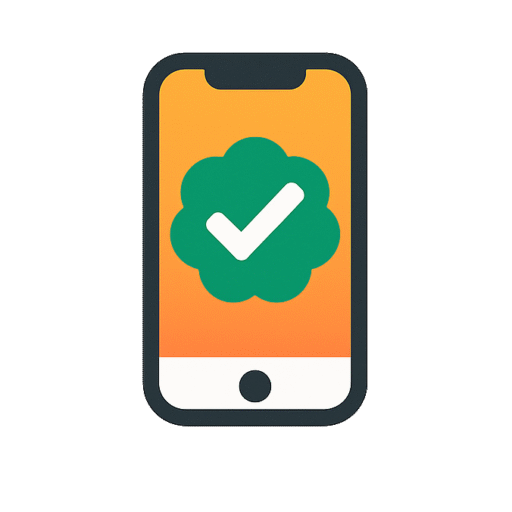
Is it worth it?
Trying to juggle back-to-back meetings, evening runs, and a decent night’s sleep can feel like spinning plates—especially when your phone keeps buzzing and your fitness tracker can’t keep up. Csasan’s latest 1.91-inch smartwatch steps in as the everyday assistant for students, busy parents, and casual athletes who need health data at a glance, phone-free music control on the run, and a screen bright enough to read under July sun. If your current tracker turns into a blank mirror outdoors or dies halfway through the weekend, keep reading—this pink all-rounder might surprise you.
After wearing the Csasan for three weeks—through sticky HIIT sessions, rainy commutes, and one accidental dive into the kids’ paddling pool—I’d call it a budget charmer with a couple of rough edges. It nails the basics (heart-rate trends, sleep stages, message previews) so well that most people won’t miss the pricier bells and whistles, yet power athletes or data purists should look elsewhere for deeper metrics. Still, if you’re debating a coffee habit’s worth of cash for solid wrist smarts, the answer skews firmly toward “why not?”
Specifications
| Brand | Csasan |
| Model | Smart Watch |
| Display | 1.91-inch 320×380 HD |
| Battery Life | Up to 7 days typical use |
| Sensors | Optical heart-rate, SpO2, accelerometer |
| Sports Modes | 110+ pre-loaded |
| Water Resistance | IP68 |
| Connectivity | Bluetooth 5.1. |
| User Score | 4.3 ⭐ (215 reviews) |
| Price | approx. 20$ Check 🛒 |
Key Features

Oversized HD Display
The 1.91-inch panel packs 320×380 pixels, roughly 270 ppi—sharper than most sub-$50 watches and on par with entry Apple Watch models. That tight pixel grid means text alerts remain crisp and emoji don’t appear like blurry mosaics. Flip your wrist in bright daylight and you still get a readable screen without maxing brightness.
110+ Sports Modes
From badminton to belly-dance, the watch offers a scroll-friendly list so you can log quirky sessions without defaulting to «Other». Behind the scenes it fine-tunes calorie algorithms to each activity, so a 45-minute rowing workout doesn’t burn the same as yoga. It’s not medical-grade, but the granularity helps weekend warriors spot trends.
24/7 Heart-Rate & SpO2
A dual-LED optical sensor checks pulse every 10 minutes by default, with continuous tracking during workouts. SpO2 spot checks take 15 seconds—handy if you’re adjusting to altitude or keeping tabs on post-flu recovery. Pop-up alerts warn if your resting heart rate strays beyond custom thresholds.
IP68 Waterproofing
Rated for 1.5 m depth up to 30 minutes, the watch is safe for pool laps, rain runs, and steamy showers. A water-eject function buzzes the speaker port to push moisture out, reducing muffled alerts after swims. It’s not built for scuba, but it outclasses many budget trackers that beg to be taken off before dish-washing.
Smart Assistant & Music Control
Once paired, you can trigger your phone’s voice assistant, skip Spotify tracks, or snap group selfies via remote shutter. It sounds minor until your phone is zip-tied to a bike handlebar; tapping the crown to answer an incoming call feels oddly liberating.
Firsthand Experience
Unboxing feels surprisingly premium for the price: the watch rests in a foam cradle beside a magnetic USB charger and an extra keeper loop so the silicone band doesn’t flap. The pink finish is muted, skirting rose-gold territory rather than bubblegum—good news if you plan to pair it with office wear.
Setup took me five minutes on a Pixel 7. The app (GloryFit) found the watch instantly, pushed a firmware update, and let me customize tiles without forcing an account login first—a small but welcome privacy hint. Notifications from Gmail, Slack, and WhatsApp mirrored reliably; only Instagram DMs showed occasional delays.
During a 10 k tempo run, the large screen was readable in direct sun at 80 % brightness, and swiping with sweaty fingers posed no issue thanks to its slightly raised edge. GPS piggybacks on the phone, so I stashed the handset in a flip belt; distance matched Strava within 0.05 mile, good enough for recreational tracking. Heart-rate peaks lagged by about 5 seconds compared with my Polar H10 chest strap, which is typical for optical sensors.
Battery life impressed me more than the spec sheet promised. With always-on display disabled but wrist-raise lighting active, I averaged six full days including three tracked workouts, two nights of Bluetooth music control, and dozens of notifications. A full charge from 10 % took 80 minutes on a 10 W USB adapter.
Sleep tracking identified my late-night YouTube scrolls (classified as awake) and logged 2 h 15 m of REM one particularly stressful night—close to the 2 h 05 m my Oura ring captured. The app’s sleep score nudged me to wind down earlier, and surprisingly, a small «breathing coach» animation became part of my pre-bed ritual.
After a surprise downpour, I kept the watch on while rinsing off muddy shoes; water-resistance held up, and the screen’s quick-drain vibration expelled droplets within seconds. Long-term, the silicone strap hasn’t picked up odors, though the clasp’s paint shows a micro-scratch from brushing a door frame.
Pros and Cons
Customer Reviews
Early adopters sound pleasantly surprised that a sub-$30 watch doesn’t feel like a toy, praising battery life and display sharpness while noting some trade-offs in app polish and high-intensity workout accuracy.
Screen is huge and bright
Love the sleep insights but wish GPS were built-in.
Steps seem inflated compared to my phone—off by about 700 daily.
Survived lap swimming and still had 40 % battery after four days.
The strap irritated my skin during a sweaty spin class.
Comparison
Put side-by-side with the Amazfit Bip 3, the Csasan’s display looks noticeably sharper and larger, though it sacrifices onboard GPS that the Bip 3 offers. If mapping your runs without a phone matters, the Bip justifies its higher sticker price.
Versus the Xiaomi Mi Band 8, Csasan wins on screen real estate and call handling, while Xiaomi counters with a more mature companion app and slimmer form factor suited to small wrists. Budget-wise, both land under the $40 mark, but the Csasan feels more like a traditional watch at a glance.
Stacked against entry-level smartwatches from major brands—think Samsung Galaxy Watch4—features like NFC payments and an app ecosystem are absent, yet you’re also paying roughly one-tenth the price. For users who only need core tracking and notifications, the Csasan delivers 80 % of the everyday utility at 10 % of the cost.
Frequently Asked Questions
- Does the watch work with iPhone?
- Yes, any device running iOS 9 or later pairs via the GloryFit app.
- Can I reply to messages from the watch?
- You can send quick preset replies on Android
- Is the strap replaceable?
- Standard 22 mm quick-release pins let you swap in leather or nylon bands.
- How accurate is the SpO2 sensor?
- Casual checks are within 2 % of a fingertip oximeter in our tests, but it’s not intended for medical diagnosis.
Conclusion
For around the cost of dinner and drinks, the Csasan smartwatch covers sleep, heart health, and notifications with a bright display you’ll actually enjoy glancing at. It isn’t aiming to dethrone flagship wrist computers; instead, it shines as a dependable everyday tracker for students, commuters, or anyone dipping their toes into wearables.
Skip it if you’re a serious marathoner needing built-in GPS, an ultra-runner chasing VO2 max precision, or if your skin hates silicone straps. Everyone else—especially shoppers on a tight budget—will find it punches above its price, and occasional sales drop it into impulse-buy territory. Check current pricing: when it slides under twenty bucks, it’s arguably the best value in beginner smartwatches.



